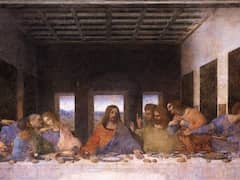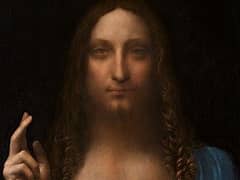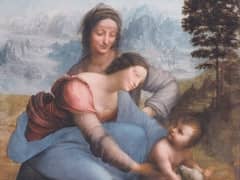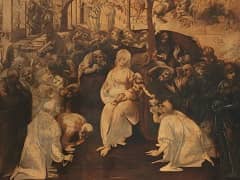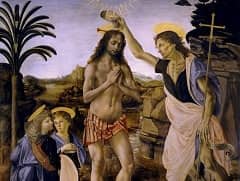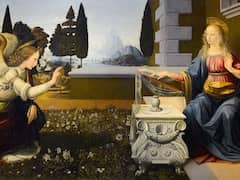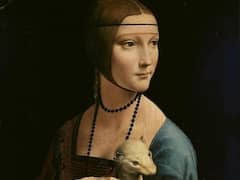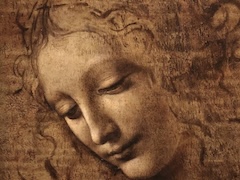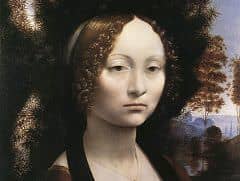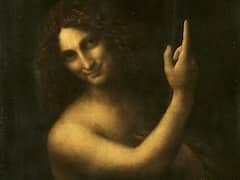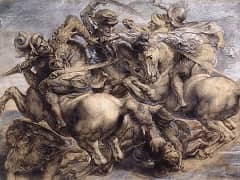Landscape Drawing for Santa Maria Della Neve - by Leonardo da Vinci

This is is the earliest known drawing by Leonardo. It is dated August 5, 1473, and now hangs in the Uffizi Gallery in Florence. The landscape, drawn in great detail, shows the valley of the Arno and Montelupo Castle. These were his childhood haunts, lovingly explored during long rambles in the hills, when Leonardo was still living with his ther's family: his stepmother, his paternal grandparents and his uncle Francesco, his first playmate.From his childhood Leonardo showed a passionate interest in things; he collected everything, from small animals to flowers, from leaves to oddly shaped pieces of wood.
Before Leonardo, a drawing of landscape without human figures and symbolism would have been unthinkable. The first complete painted landscape is credited to Peter Paul Rubens, almost two hundred years after da Vinci's drawing was made. Leonardo's fluent technique is ahead of its time in the handling of rocks, rivers and vegetation. The pen-and-ink lines over a partially erased pencil sketch are simply drawn as horizontal strokes to suggest tree branches and leaves; lines following the contours of the land forms suggest the solidity of the earth. Closely drawn horizontal lines efficiently suggest reflections on the surface of the water, and Leonardo's understanding of perspective means that he makes the tonal effects of the pen lines less prominent as they recede into the distant landscape. With multiple lines of hatching, he builds up the large, closer rocky shapes and convinces the eye of the solidity of the terrain. Where he has drawn many lines converging to represent swiftly flowing water, the eye perceives substance and movement. The delicacy of the smaller objects in the landscape - the fortified buildings and the dark shapes of floating boats - brings them into prominence.


